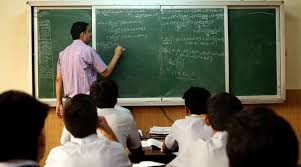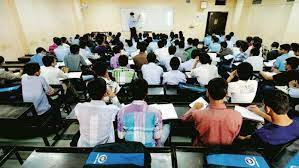Case study chapter 4(Determinants)
Case study 3:– Read the following and answer the question(Case study problem determinant 3 )
The monthly incomes of two sister Reshma and Ritam are in the ratio 3:4 and their monthly expenditures are in the ratio 5;7. Each sister saves Rs 15,000 per month.

(i) If monthly income of Reshma and Ritam are ₹3x and ₹4x and their monthly expenditure are Rs 5x and Rs 7y respectively, then the information provided in problemmay be written in system of linear equation.
(a) x – y = 15,000, x + y = 15,000
(b) 3x + 5y = 15,000, 4x + 7y = 15,000
(c) 3x – 5y = 15,000, 4x – 7y = 15,000
(d) 5x – 3y = 15,000, 7x – 4y = 15,000
(ii) System of linear equations
3x – 5y = 15,000
4x – 7y = 15,000
may be written in matrix equation as
(a) ![]()
(b) ![]()
(c) ![]()
(d) ![]()
(iii) If AX = B, where A,X,B are matrices then X should be
(a) X = AB (b) $X = BA^{-1}$
(c) $X = AB^{-1}$ (d) $X = A^{-1}B$
(iv) If ![]() then
then ![]() is
is
(a) ![]()
(b) ![]()
(c) ![]()
(d) ![]()
(v) Monthly income of Reshm,a and Ritam is
(a) Rs 90000 each (b) Rs 90000 and Rs 12,000 respectively
(c) Rs 1,20,000 and Rs 90,000 (d) None of these
Solution:(i) Answer (c)
Monthly savings of Reshma
= Monthly income of Reshma – Monthly expenditure of Reshma
15000 = 3x – 5y
Simmilarly for Ritam
15000 = 4x – 7y
Hence, required system of linear equation
3x – 5y = 15,000
4x – 7y = 15,000
(ii) Answer (a)
We have system of linear equations
3x – 5y = 15,000
4x – 7y = 15,000
This may be written in matrix system as
![]()
(iii) Answer (d)
We have
AX = B
Pre multiplying ![]() both sides, we have
both sides, we have
![]()
![]()
![]()
![]()
(iv) Answer (d)
We have
![]()
⇒ |A| = -21 + 20 = -1 ≠ 0
NOW,
![]()
![]()
![]()
![]()
![]()
![]()
![]()
(v) Answer (b)
![]()
![]()
![]()
![]()
⇒ x = 30000, y = 15000
Hence
Reshma’s monthly income = 3x = 3×30000 = ₹90000
Ritam’s monthly income = 4x = 4×30000 = ₹ 120000
—————————————————-
Some other Case study problem
Case study 1:– Read the following and answer the questions(Case study problem determinant 1)

Three friends Rahul, Ravi and Rakesh went to a vegetable market to purchase vegetable. From a vegetable shop Rahul purchased 1 kg of each potato, onion and Brinjal for a total of ₹ 21. Ravi purchased 4 kg of potato, 3 kg of onion and 2 kg of Brijal for Rs 60 while Rakesh purchased 6 kg potato, 2 kg onion and 3 kg Brinjal for Rs 70
Solution : For solution click here
Case study 2:- Read the following and answer the question(Case study problem determinant 2)
Reshma wants to donate a rectangular plot of land for a school of her village. When she was asked by construction agency to give dimensions of the plot, she said that if its length is decreased by 50 m and breadth is increased by 50m, then its area will remain same, but if length is decreased by 10 m and breadth is decreased by 20m, then its area will decreased by 5300 m².

Solution: For solution click here
Case study 4:– Read the following and answer the question(Case study problem determinant 4)
On the occasion of children’s day. Class teacher of class XII shri singh, decided to donate some money to students of class XII.

If there were 8 studens less, every one would have got ₹10 more, however if there were 16 students more, everyone would have got ₹10 less.
Solution: For solution click here
Case study 5:– In coaching institutes, the students not only get academic guidance but also they get to know about career options and right goals as per their interest and academic record.(Case study problem determinant 5)

A coaching institute conduct classes in two sections A and Band fees for rich and poor children are different. In section A, there are 20 poor and 5 rich children and total monthly collection is ₹9,000, where as in section B, there are 5 poor and 25 rich children and total monthly collection is ₹ 26, 000.
Solution: For solution click here


